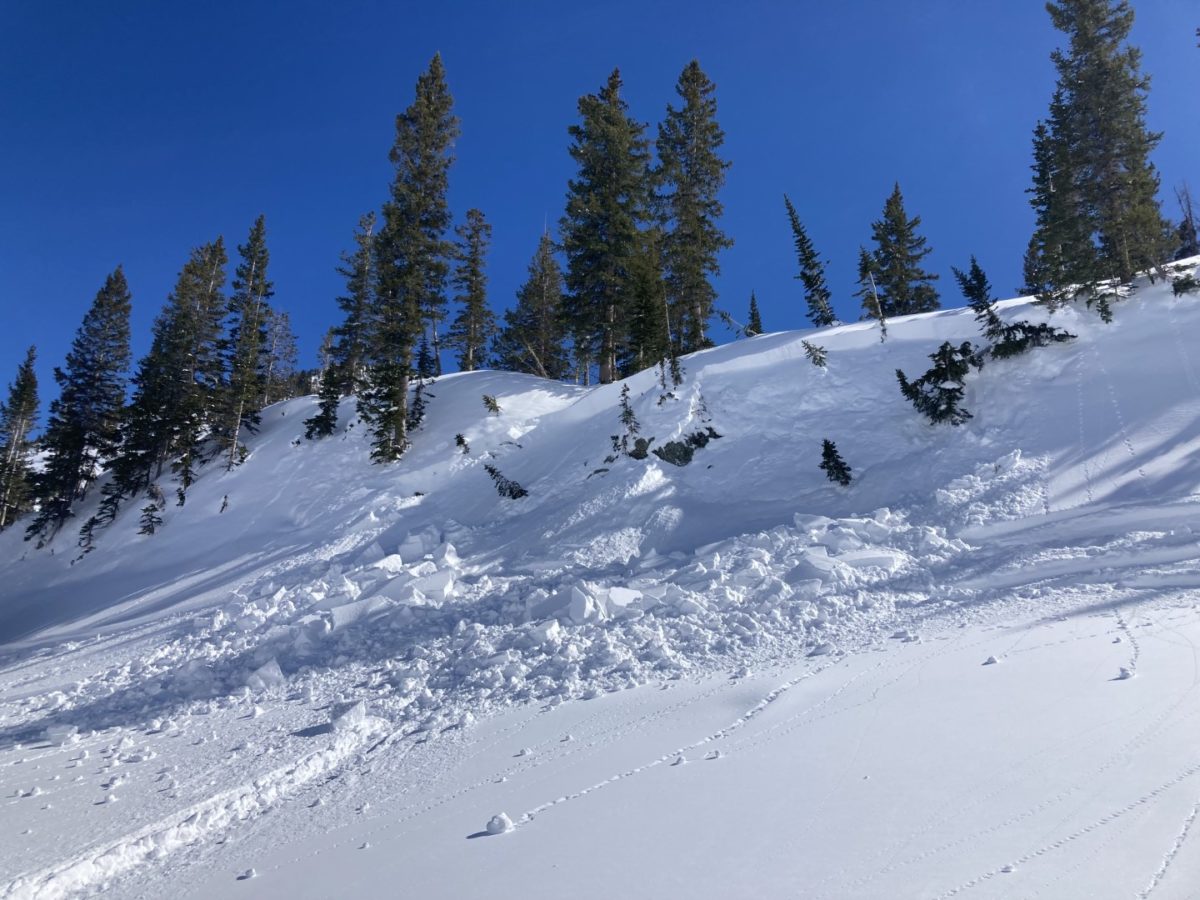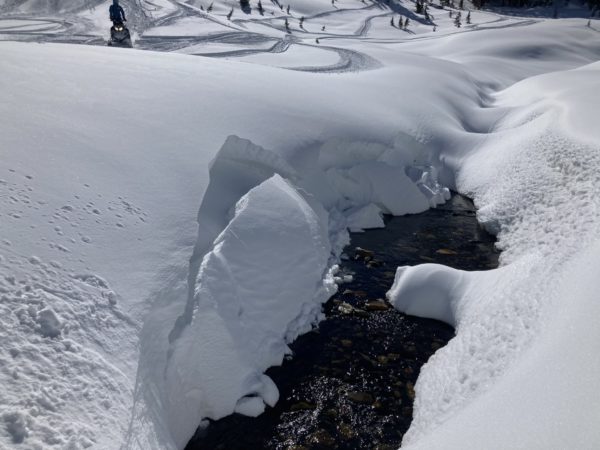A small, steep slope used to gather feedback on instabilities in the upper snowpack.
Ski or sled cuts on inconsequential test slopes are a quick and useful technique for assessing instabilities in the upper layers of the snowpack. Test slopes should be geographically representative and steep enough to slide. Most importantly, they should be small with no terrain traps that could inflict harm if you get caught in an avalanche. For storm instabilities or fresh wind loading, jumping onto small, steep, rollovers often gives clear feedback, such as shooting cracks, collapses, or small avalanches. Due to the spatial variability of persistent weak layers and their trigger points, test slopes are generally unreliable for assessing deeper weak layers or harder slabs.


